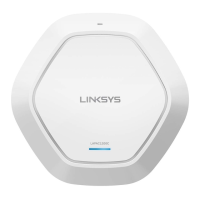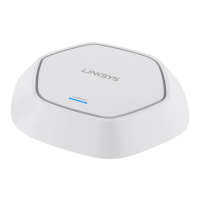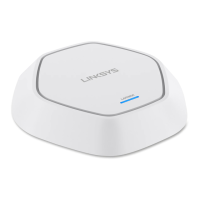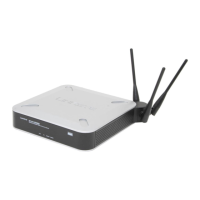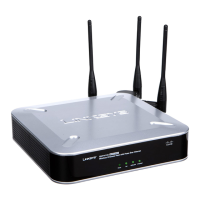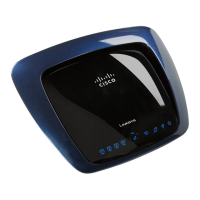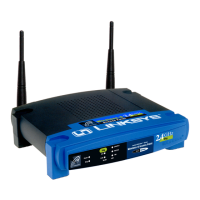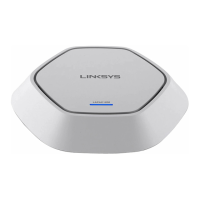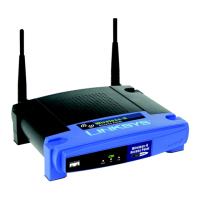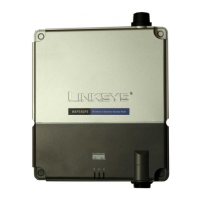99
Section 3: Configuring the Access Point
LAPAC1750PRO Access Point Software User Manual
Group Name Select the group to which the user belongs. Each
CP instance is configured to support a particular
group of users.
Maximum Bandwidth
Upstream
The maximum upload speed, in megabits per
second, that a client can transmit traffic when
using the captive portal. This setting limits the
client’s bandwidth used to send data into the
network. The range is from 0 to 300 Mbps. The
default is 0.
Maximum Bandwidth
Downstream
The maximum download speed, in megabits per
second, at which a client can receive traffic when
using the captive portal. This setting limits the
client’s bandwidth used to receive data from the
network. The range is from 0 to 300 Mbps. The
default is 0.
Delete User To delete the current user, select this option and
click Save.
Authenticated Clients
The Authenticated Clients page provides information about clients that have
authenticated on any captive portal instance.
Click the Configuration > Captive Portal > Authenticated Clients tab to access
the page, which the following figure shows.
Figure 56: CP Authenticated Clients
The following table describes the fields on the CP Authenticated Clients page.
Table 64: Captive Portal Authenticated Client List
Field Description
Total Number of
Authenticated
Clients
The number of clients that have successfully
authenticated on any CP instance. This
number includes only clients that are currently
authenticated.
MAC Address The MAC address of the client.
IP Address The IPv4 or IPv6 address of the client. If the
client has a valid IPv4 address assigned, it will be
displayed here otherwise a global IPv6 address,
either from DHCPv6 or Autoconfiguration or
statically configured, will be used.
User Name The client’s Captive Portal user name.
Protocol Mode The protocol the user used to establish the
connection (HTTP or HTTPS).
Verify Mode The method used to authenticate the user on the
Captive Portal, which can be one of these values:
• Guest — The user does not need to be
authenticated by a database.
• Local — The access point uses a local database
to authenticated users.
• RADIUS — The access point uses a database on
a remote RADIUS server to authenticate users.

